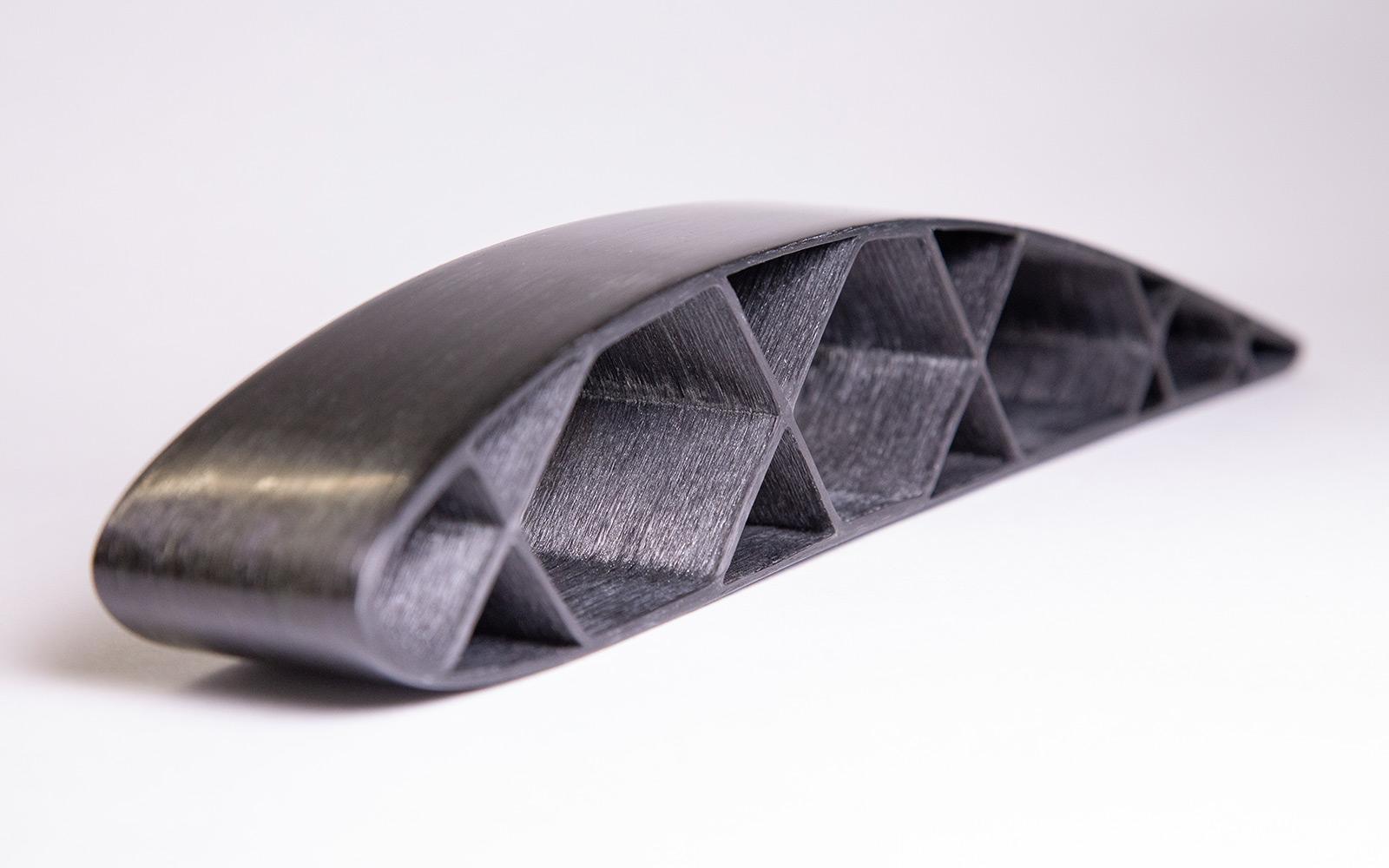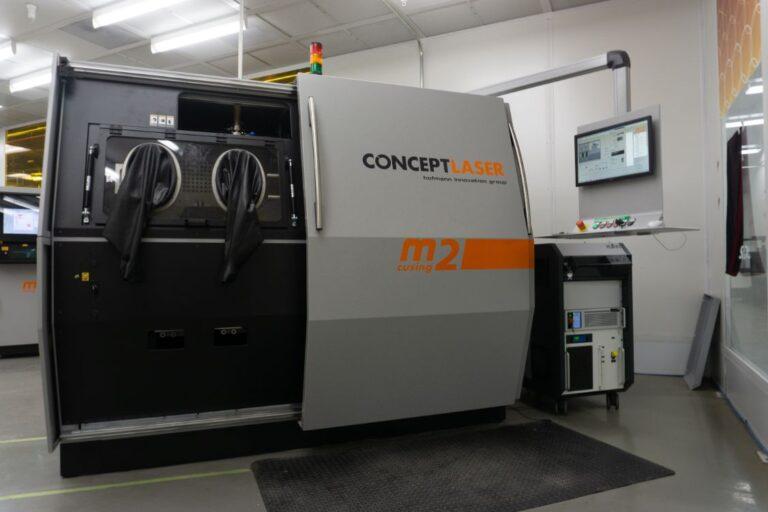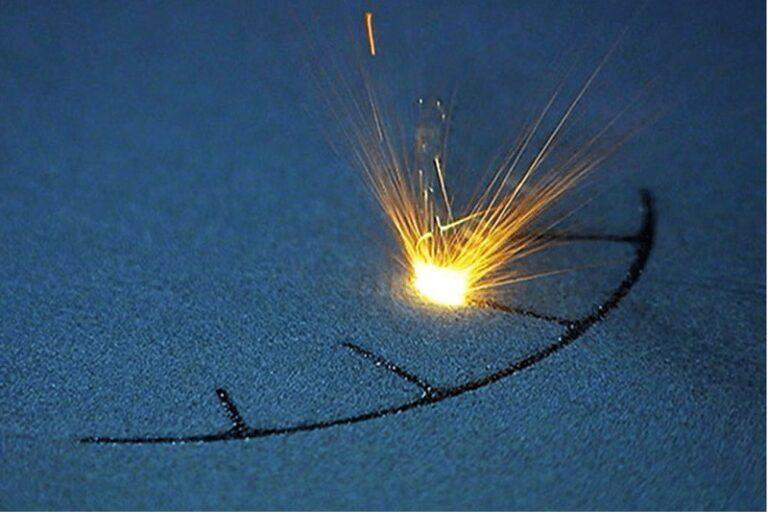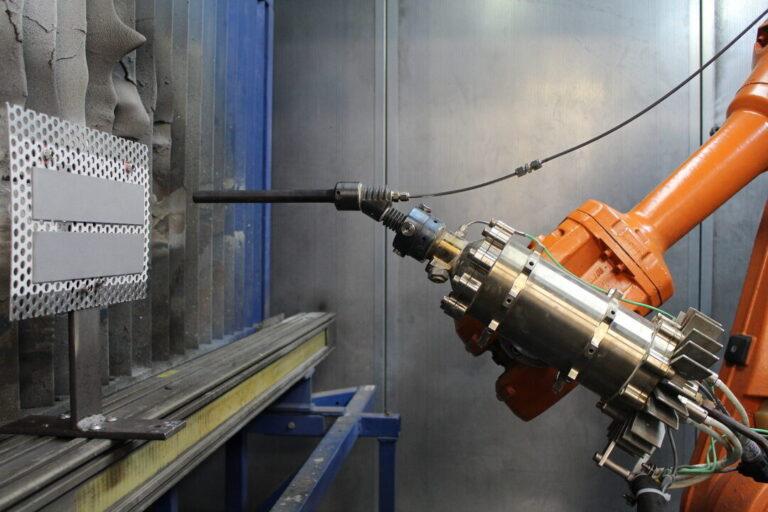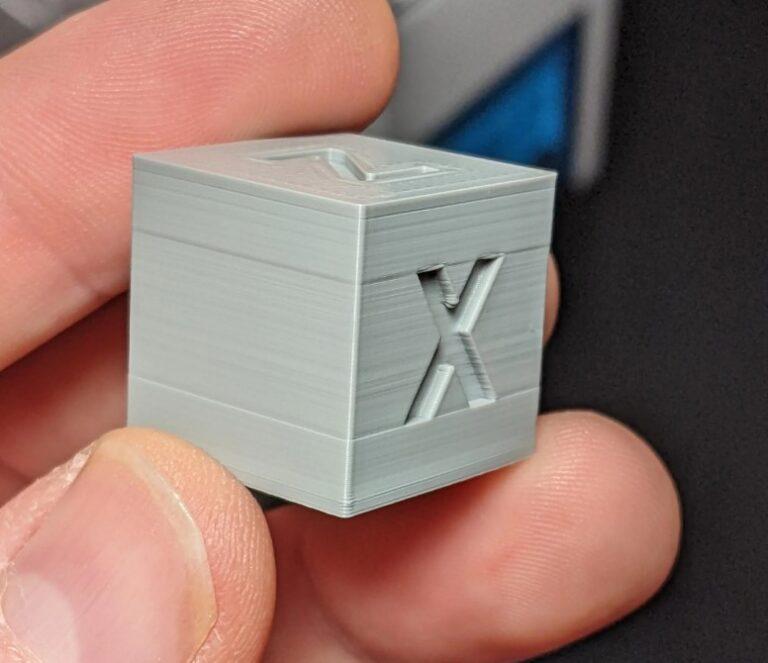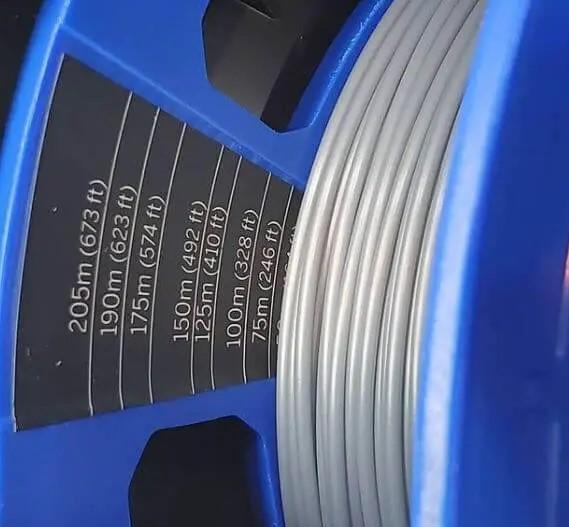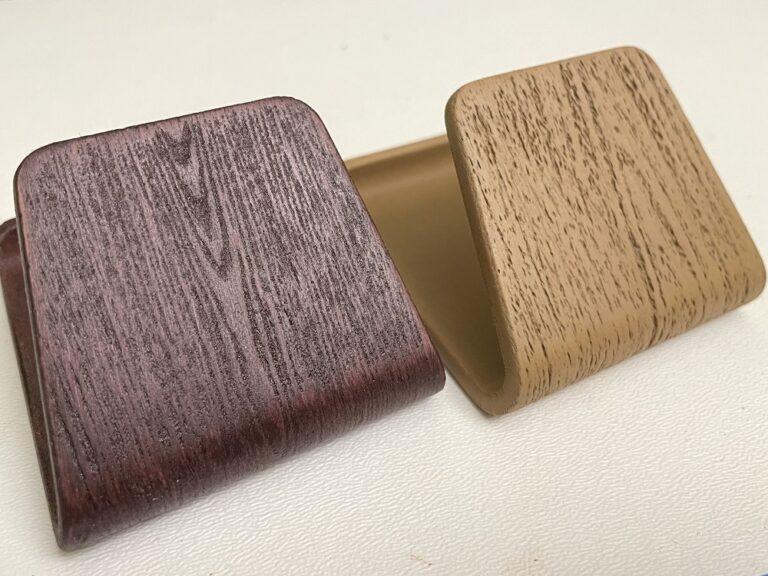Introduction
Carbon fiber is strong and lightweight. It’s preferred for sports equipment and aerospace. The material has been used for a long time. Unfortunately, the conventional processes for producing carbon fiber can be costly, time-consuming, and labor-intensive. 3D printed carbon fiber is transforming the manufacturing sector with its new technology.
One deposits carbon fiber composites layer by layer using a 3D printer. People know this method as 3D printing carbon fiber. Complex and specialized designs that were previously difficult to produce using conventional production techniques are now possible thanks to technology. 3D printing eliminates the need for expensive molds and tooling. It can significantly reduce production costs and time. This is because the part is directly printed, without the need for molds. Therefore, 3D printing can be a cost-effective manufacturing solution. It also offers greater design flexibility and customization options.
3D printed carbon fiber will impact the aerospace, automotive, and medical industries.
Industry experts predict this impact will be significant. Companies have already used it to produce strong, lightweight parts for prosthetic limbs, vehicles, and aircraft. Experts consider 3D printed carbon fiber a game-changer in manufacturing. It offers a vast range of potential applications.
This blog article explores 3D printed carbon fiber. It delves into its characteristics, benefits, and uses. We will delve deeper into this exciting realm. We’ll talk about the technology’s drawbacks and difficulties as well as current research and development initiatives to advance it. By the end of this article, you will understand better the manufacturing revolution sparked by 3D printed carbon fiber.
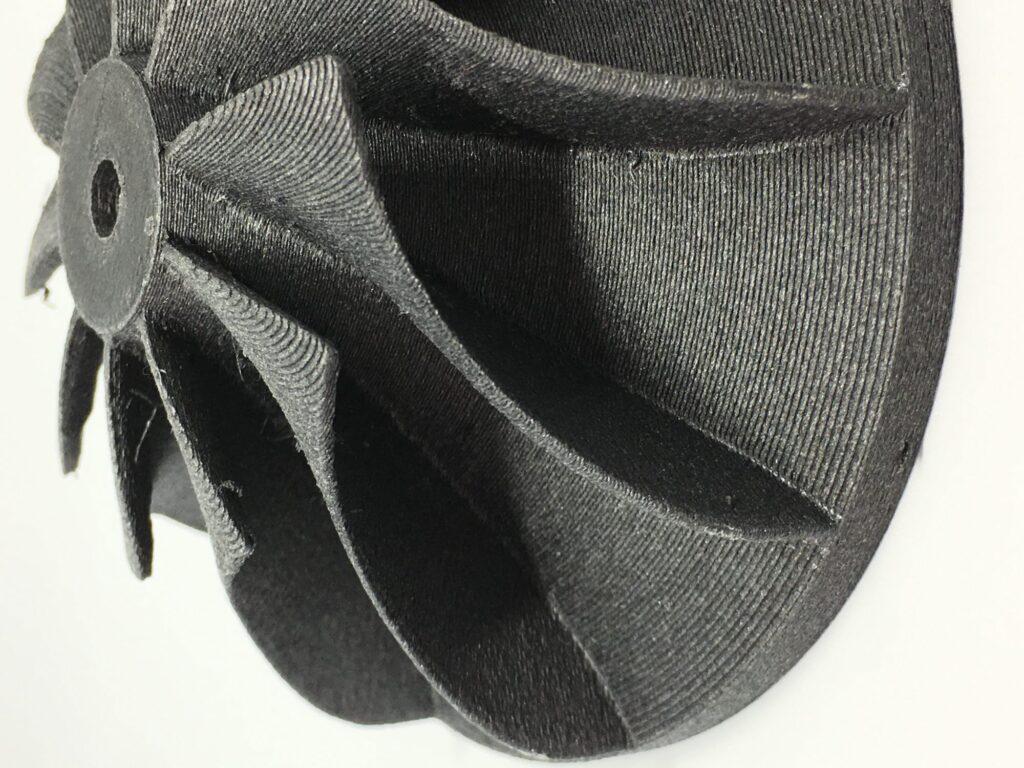
What is 3D printed carbon fiber?
3D printed carbon fiber is a new technology. It uses 3D printing methods. The shapes produced are intricate and unique. The material used is carbon fiber composites. The 3D printing process creates the desired shape layer by layer by using a thermoplastic substance and carbon fibers. This process allows for customization to fit specific design needs and produces a product with excellent strength and lightweight properties.
Preparing the filament is the first phase. Feeding the filament comes next. Printing is the final phase. All these phases are involved in the 3D printing of carbon fiber composites. Manufacturers mix carbon fibers with a thermoplastic substance like ABS, PLA, or nylon to create the filament. They extrude the combined substance to create the filament for 3D printing. The printer heats and melts the filament, depositing it layer by layer to make the final object.
3D-printed carbon fiber enables intricate geometries and personalized designs. Conventional manufacturing techniques previously made this difficult to realize. The capacity to produce such designs is a primary benefit of 3D-printed carbon fiber. Moreover, 3D printing eliminates the need for pricey tooling and molds, which lowers production costs and speeds up the process. Carbon fiber has high strength and lightweight properties, making it ideal for aerospace and medical devices. It’s perfect for various applications.
The pioneering technology of 3D printed carbon fiber is revolutionizing the manufacturing sector overall. 3D printed carbon fiber is robust, lightweight, and personalized. It is a popular choice for various applications. The technology has enormous future development potential.
Explain why it is revolutionizing manufacturing
3D printed carbon fiber is revolutionizing manufacturing with its advantages over conventional techniques. 3D printing enables intricate and unique patterns. Conventional manufacturing couldn’t produce them before. This makes product creation more efficient and effective. Products can be tailored to specific consumer needs.
3D printed carbon fiber is faster and cheaper than traditional manufacturing methods. 3D printing eliminates the need for costly molds or equipment. This results in a significant decrease in production costs and lead times. Manufacturers can produce goods quicker and for less money. This makes it easier to market new goods and competes globally.
Finally, 3D printed carbon fiber is a more sustainable solution than traditional manufacturing methods. The lack of tooling and molds results in producing less waste during production. Moreover, 3D printing makes it possible to employ recycled materials, minimizing the production process’ negative environmental effects.
3D-printed carbon fiber is transforming manufacturing. It enables quicker and more effective product design. It lowers prices and shortens the time to market. Overall, it’s a game-changer. We may anticipate significantly higher acceptance and effect across a range of industries as technology advances.
Preview the main points you will cover in the post
In this blog post, we’ll explore 3D printed carbon fiber in manufacturing. First, we’ll discuss its benefits: durability, lightweight, and adaptability. Then, we’ll examine its various applications, from aircraft to medical equipment. We’ll also address the challenges and ongoing research projects for improvement. At the end of this post, you’ll fully comprehend how 3D printed carbon fiber is changing manufacturing and product development.
What is 3D printed carbon fiber?
3D printed carbon fiber is a manufacturing technique. It uses carbon fiber composites and 3D printing technology. The technique produces lightweight products. It also produces highly stable products. The result is a product with enhanced performance. Thin threads make up carbon fiber by closely binding carbon atoms together. Because of this structure, carbon fiber has strength and weight advantages over many conventional materials, including steel and aluminum.
Carbon fiber filaments are combined with a thermoplastic substance like ABS or nylon. The combination results in a composite material. This process is known as 3D printing. The 3D printer melts and deposits this material layer by layer as it feeds it in as an extruded filament. 3D printing technology gives the final object the strength and toughness of carbon fiber. You can also personalize it.
3D printed carbon fiber can produce intricate shapes and structures. This capability was not possible with traditional manufacturing methods. The technology has unlocked new possibilities for design and production. Complex and customized designs are now achievable with 3D printed carbon fiber. Manufacturers can create highly personalized products that suit specific design specifications. Moreover, 3D printing eliminates the need for pricey equipment and molds, lowering production costs and speeding up the process.
3D printed carbon fiber is revolutionizing the manufacturing sector with its ground-breaking technology. Many industries already use 3D printed carbon fiber. It produces strong and lightweight goods. It can be personalized to meet specific requirements. Examples include aerospace, automotive, and medical devices. Future applications of 3D printed carbon fiber are likely to be much more creative as technology advances
carbon fiber properties
Thin fibers of carbon atoms bond tightly together to create carbon fiber material. The fibers are strong and lightweight. They’re perfect for many industries. Aerospace and automotive are examples. Sporting goods are another industry that benefits. The properties of carbon fiber make it a highly desirable material for manufacturers looking to create high-performance products.
One of the most important properties of carbon fiber is its strength. Carbon fiber is one of the strongest materials available, with a tensile strength that is greater than that of steel. This means that it can withstand high loads without breaking or deforming. Carbon fiber is highly resistant to fatigue. It can endure repeated cycles of loading and unloading. The material maintains its strength throughout.
Another important property of carbon fiber is its stiffness. Carbon fiber is a very stiff material, meaning that it resists bending and flexing. Applications that require rigidity, like aircraft wings or sporting equipment, find carbon fiber ideal due to its properties. Carbon fiber is highly resistant to temperature changes and chemicals. It is durable material for harsh environments.
Here is a table that summarizes some of the key properties of carbon fiber:
| Property | Value |
|---|---|
| Tensile strength | 3,500 – 7,000 MPa |
| Density | 1.5 – 2.0 g/cm³ |
| Young’s modulus | 230 – 430 GPa |
| Thermal expansion coefficient | -0.1 to -1.0 x 10^-6/K |
| Fatigue strength | 210 – 400 MPa |
Carbon fiber’s properties make it an ideal material for a wide range of applications that require strength, stiffness, and durability. The advancement of 3D printed carbon fiber technology is ongoing. The technology has already shown promising results. As technology progresses, we can expect more innovative applications. The future is bright for 3D printed carbon fiber technology.
The 3D printing process for carbon fiber
The 3D printing procedure for carbon fiber uses a 3D printer and carbon fiber filament. To create the filament, they combine carbon fibers with a thermoplastic substance, such as nylon or ABS. The 3D printer then uses heat to melt the composite material before extruding it through a nozzle.
After putting the filament into the printer, you can start the printing process. The printer will deposit the carbon fiber filament layer-by-layer to build the required object. Extruding the filament from the nozzle causes the filament to melt and fuse together to form a sturdy, solid object.
One of the key advantages of 3D printing carbon fiber is the ability to create complex shapes and structures. The carbon fiber filament is elastic. 3D printing is precise. This combination allows producers to create intricate shapes. Traditional manufacturing processes would struggle to achieve this level of complexity.
Nonetheless, 3D printing carbon fiber does present certain obstacles. The high melting temperature of carbon fiber can affect print quality. Carbon fiber filaments can be more brittle than other filaments. This can lead to concerns about cracking and breaking. Carbon fiber filament is also more expensive than other filaments. As a result, creating objects from this material may be more costly.
Despite these difficulties, 3D printing carbon fiber is a promising technology that is becoming more and more popular across numerous industries. As the technology continues to advance and become more cost-effective, we may expect to see even more novel uses of 3D printed carbon fiber in the future.
The benefits of 3D printed carbon fiber over traditional manufacturing methods
The capacity to produce intricate patterns and designs that would be challenging or impossible to accomplish using conventional manufacturing techniques is one of the main advantages of 3D-printed carbon fiber. The molds or tools needed to make the pieces place restrictions on traditional manufacturing processes like CNC machining or injection molding. 3D printing allows for designing and producing parts without using costly and time-consuming tooling.
The high strength-to-weight ratio of 3D printed carbon fiber is an additional benefit. Carbon fiber exhibits exceptional lightweight and high strength and rigidity. This makes it the perfect material for use in the aerospace and automotive industries, where reducing weight is crucial.
3D printed carbon fiber offers more design flexibility. Quick prototyping and iterations are possible without retooling or making new molds. You can make design changes quickly and easily. This decreases development time and costs significantly.
Last but not least, manufacturing carbon fiber using 3D printing is more environmentally friendly than using conventional methods. By using too much material, producing too much scrap, and using too much energy, traditional industrial methods can generate a lot of waste. You can reduce the waste of materials and 3D printing consumes less energy overall.
In comparison to conventional manufacturing techniques, 3D printed carbon fiber has a number of advantages, including increased design flexibility, a better strength-to-weight ratio, sustainability, and time and cost savings. We may anticipate seeing even more cutting-edge uses of 3D-printed carbon fiber in the future as technology advances.
Advantages of 3D printed carbon fiber
One of the key advantages of 3D printed carbon fiber is its excellent strength-to-weight ratio. Carbon fiber exhibits exceptional strength and stiffness, and it is also lightweight. This makes it the perfect material for use in the aerospace and automotive industries, where reducing weight is important. 3D printing parts with complex geometries and optimized structures can further improve the strength-to-weight ratio of the final product.
The design freedom of 3D printed carbon fiber is another benefit. The layer-by-layer approach of 3D printing allows for the creation of complex shapes and designs that would be difficult or impossible to achieve using traditional manufacturing methods. 3D printing enables the design and production of parts without costly and time-consuming tooling.
In addition, 3D printed carbon fiber is more economical and environmentally friendly than conventional manufacturing processes. By using too much material, producing too much scrap, and using too much energy, traditional industrial methods can generate a lot of waste. You can reduce the waste of materials and 3D printing consumes less energy overall. Additionally, 3D printing allows for rapid prototyping and iterations, reducing development time and costs.
In comparison to conventional production techniques, 3D-printed carbon fiber has a number of benefits, including improved strength-to-weight ratio, design flexibility, cost-effectiveness, and sustainability. These advantages make it a desirable option for a variety of industries, and as the technology advances and becomes more widely available, we can anticipate seeing even more cutting-edge uses for 3D-printed carbon fiber in the future.
The lightweight and high-strength properties of 3D printed carbon fiber
The combination of high strength and low weight that 3D printed carbon fiber offers are one of its most important benefits. Because of its high strength-to-weight ratio, carbon fiber is a popular choice for applications where weight reduction is important. Carbon fiber’s light weight makes it possible to reduce the overall weight of a component or product, which can lead to energy savings, greater fuel economy, and improved performance.
The ability to create intricate forms and patterns using 3D printing can help carbon fiber retain its high-strength and lightweight characteristics. Using the layer-by-layer method of 3D printing can increase the strength-to-weight ratio of the end product by producing optimum structures and geometries. As a result, carbon fiber parts produced using 3D printing can be stronger and lighter than those created using conventional manufacturing processes.
The aerospace, automotive, and sporting goods industries, among others, find 3D printed carbon fiber to be an appealing option due to its high strength and low weight. Weight reduction is essential for increasing fuel efficiency and lowering emissions in the aerospace and automobile industries. Lightweight and highly durable materials can enhance performance and durability in the sporting goods industry.
Overall, 3D printed carbon fiber’s lightweight and high strength characteristics make it the perfect material for a variety of applications where strength and weight reduction are essential. Future 3D printing applications are likely to be much more creative as the technology develops and becomes more widely available.
How 3D printing enables the creation of complex and customized designs
The capability of 3D printing to create intricate geometries and unique designs is one of its key benefits. 3D printing employs an additive strategy, in contrast to conventional manufacturing processes, which rely on subtractive or formative techniques. This means that the printer constructs components layer by layer, adding more features and details with each layer to create the final product. As a result, 3D printing enables the production of extremely intricate and sophisticated designs that would be challenging or impossible to realize using conventional manufacturing processes.
Moreover, 3D printing allows for design customization, enabling the creation of distinctive, one-of-a-kind pieces. Designers use computer-aided design (CAD) software to turn their ideas into 3D models. Then, they can print the models using 3D printing technology to create actual parts. This technique allows for customization, producing highly specialized items to fit specific needs or specifications.
Furthermore, 3D printing enables the creation of objects with internal structures and intricate geometries that traditional manufacturing processes cannot achieve. Parts with superior performance, such as increased strength, decreased weight, or better flow characteristics, may result from the capacity to create complex interior structures.
In general, the ability of 3D printing to produce intricate and personalized designs offers a variety of advantages for many businesses. You can create one-of-a-kind, distinctive parts, and highly specialized goods using 3D printed carbon fiber, and customize them to match your specific needs or specifications. Moreover, 3D printing is a desirable option for a variety of applications due to its capacity to manufacture internal structures and complex geometries, which can result in parts with higher performance.
The cost-effectiveness and sustainability of 3D printed carbon fiber
3D printed carbon fiber is cost-effective, particularly for custom designs or small manufacturing runs. Conventional manufacturing techniques can be costly since they call for expensive tooling and equipment setup expenses, especially for short production runs. On the other hand, 3D printing does away with the requirement for tooling and enables the creation of parts as needed, cutting down on both production costs and lead times.
Moreover, 3D printing makes it possible to design complex geometries and optimized products that can increase the effectiveness of components and goods and, ultimately, save costs. For instance, 3D printed carbon fiber can result in energy savings and lower operational expenses by reducing the weight of a product.
The production process for 3D printed carbon fiber is not only economical but also environmentally friendly. Traditional manufacturing processes produce significant waste material by machining or molding larger blocks of material. In contrast, 3D printing produces very little waste as it is an additive process that constructs parts layer by layer. This results in a more sustainable manufacturing process because it not only minimizes material waste but also the energy needed to make parts.
Overall, 3D printed carbon fiber is an appealing solution for a variety of applications due to its affordability and sustainability. 3D printed carbon fiber can help businesses increase their profits while simultaneously promoting a more sustainable manufacturing sector by cutting production costs and lead times, as well as waste and energy usage.
Applications of 3D printed carbon fiber
A wide range of applications in numerous industries is possible because of the special qualities of 3D printed carbon fiber. Aerospace companies are using 3D printed carbon fiber to create lightweight components that can increase fuel economy and lower emissions. For the LEAP jet engine, for instance, GE Aviation has created a 3D-printed carbon fiber component that is 30% lighter and five times stronger than its metal counterpart.
The automotive sector is using 3D printed carbon fiber to create lightweight components. These components can enhance performance and fuel economy. Bugatti, a luxury automaker, created the Chiron, a high-performance sports car, using 3D printed carbon fiber. Chiron’s engineers 3D printed the titanium exhaust system, which makes it stronger and lighter compared to conventional exhaust systems.
Medical professionals use 3D printed carbon fiber to create personalized implants and prosthetics for each patient. Medical experts can use 3D printing to produce implants and prostheses that fit more comfortably and precisely than conventional, off-the-shelf items. For instance, Oxford Performance Materials created a spinal implant with 3D printed carbon fiber that fits each patient’s unique anatomy, reducing the risk of problems and improving patient outcomes.
Sports equipment, such as bicycle frames and tennis rackets, as well as consumer electronics, including smartphone cases and laptop casings, are other industries that use 3D printed carbon fiber. These applications create objects that are both useful and visually beautiful by utilizing the lightweight and high-strength characteristics of 3D printed carbon fiber.
Overall, the uses for 3D printed carbon fiber are numerous and varied, with prospective uses in a variety of industries. Using the special qualities of 3D-printed carbon fiber, businesses may develop cutting-edge goods that are strong, lightweight, and tailored to match certain needs and specifications.
aerospace industry
3D printed carbon fiber benefits the aerospace industry significantly. The industry requires lightweight and high-strength materials to reduce the weight of the aircraft, improve fuel efficiency, and enhance performance. With the advent of 3D printing technology, aerospace companies can now produce complex components that were once impossible to manufacture using traditional methods.
Boeing, one of the world’s largest aircraft manufacturers, has been using 3D printed carbon fiber parts in its aircraft components. In 2018, Boeing partnered with a startup called Continuous Composites to develop a 3D printing technology that can print continuous carbon fiber composites. This technology enables the production of strong and lightweight components that were previously difficult to manufacture using traditional methods.
Boeing and Continuous Composites used this technology to develop a drone wing. They printed the wing in a single piece of carbon fiber composite. The drone wing was 20 feet long and weighed just 30 pounds, significantly lighter than traditional aluminum or fiberglass wings. The use of 3D printed carbon fiber enabled the creation of a more aerodynamic and efficient design, with fewer parts and less assembly required.
Another company making waves in the aerospace industry with 3D printed carbon fiber is GE Aviation. The company has developed a 3D printed carbon fiber component for the LEAP jet engine, which powers the Airbus A320neo, Boeing 737 MAX, and COMAC C919. The component is a fuel nozzle tip and is 30% lighter and five times stronger than its metal counterpart. The use of 3D printing has allowed GE Aviation to produce the nozzle tip as a single part, eliminating the need for multiple components and reducing assembly time.
automotive industry
The automotive industry is another area that is utilizing 3D printed carbon fiber for its components. Carbon fiber is the perfect material for decreasing vehicle weight because of its lightweight and high-strength characteristics, which results in increased fuel efficiency and reduced emissions.
The Italian luxury sports vehicle maker Lamborghini stated in 2019 that it had used 3D printing to create a new generation of parts. The printer used carbon fiber and polymer materials to print the parts. The parts include a center air vent and a clip for the fuel cap. The adoption of 3D printing allowed Lamborghini to develop components that were lighter, stronger, and more intricate in design than traditional production processes.
Additional automakers are investigating the use of 3D printed carbon fiber. Ford 3D printed a prototype of a carbon fiber wheel. Printing the wheel in one piece reduces its weight by around 35% and does not require assembly. Using 3D printed carbon fiber wheels can significantly impact vehicle performance and efficiency.
You can use 3D printed carbon fiber to create custom components that reduce weight and improve performance. BMW has been using 3D printing to produce customized components for its vehicles, such as personalized shift knobs and key fobs. With conventional production techniques, it was previously challenging to attain this level of personalization.
medical industry
Another business that benefits from the use of 3D printed carbon fiber is the medical field. The capacity to produce intricate and unique designs is one of the main benefits of 3D printing, which is crucial in the medical industry as each patient has different needs.
The creation of prosthetic limbs is one application of 3D printed carbon fiber in the medical field. While carbon fiber prosthetics are more pleasant for the user and increase mobility overall, they are stronger and lighter than conventional prosthesis. Moreover, 3D printing makes it possible to design personalized prosthetics that are catered to each patient’s unique demands, enhancing the prosthetic’s fit and functionality.
3D printed carbon fiber is also being used to create surgical tools and instruments in addition to prosthetics. The precision and safety of surgical procedures can be increased by using these tools, which can be made to be stronger, lighter, and more ergonomic than conventional instruments.
Making implants is another way that 3D printed carbon fiber is used in the medical sector. Because carbon fiber implants are biocompatible and lightweight, they are less likely to have negative effects on the body. By accurately adapting the implants to the patient’s anatomy, 3D printing makes it possible to produce personalized implants that fit the patient better and lower the chance of complications.
Overall, the ability to create individualized, high-performance implants, surgical instruments, and prostheses thanks to the utilization of 3D-printed carbon fiber in the medical sector has the potential to greatly enhance patient outcomes.
Challenges and future outlook for 3D printed carbon fiber
While there is no denying the advantages of 3D printed carbon fiber, there are still several issues that must be resolved before the technology can be more generally used. The cost of production is one of the major issues. Long-term cost savings from 3D printing may be possible, but the initial cost of materials and equipment may be high.
In order to optimize the printing process and raise the caliber of the end product, additional research and development are required. To further improve the tensile strength and durability of 3D printed carbon fiber, new materials, and techniques are being developed.
Notwithstanding these difficulties, 3D printed carbon fiber has a bright future. As technology develops, it has the potential to completely transform manufacturing in a variety of industries. As an illustration, 3D-printed carbon fiber might be utilized to produce more effective and lightweight components for the automobile and aerospace sectors, improving performance and fuel economy.
Even more sophisticated prosthetics, implants, and surgical tools could be made in the medical sector using 3D-printed carbon fiber, which would further enhance patient outcomes. Additionally, new applications in fields like robotics and renewable energy could be developed using the technology.
Overall, 3D-printed carbon fiber has a wide range of potential uses, and with further research and development, the technology may one day completely alter the manufacturing industry.
The high cost of materials and equipment
Although being a promising technology, 3D printed carbon fiber still has several drawbacks. The high cost of supplies and tools is one of the major obstacles. A 3D printer that can produce carbon fiber costs a lot of money because the material is relatively pricey.
The process of 3D manufacturing carbon fiber can be expensive, difficult, and time-consuming. Smaller businesses find it difficult to use the technology since it demands specific knowledge and expertise.
The size of the manufactured items is another drawback of 3D printed carbon fiber. The size of the pieces that can be printed may be constrained by the limited print bed size of the majority of 3D printers. When larger parts are frequently needed, like in the aerospace and automobile sectors, this might be an issue.
Furthermore, despite the exceptional strength and durability of 3D printed carbon fiber, not all applications may be appropriate. For example, traditional manufacturing methods may still be better suited for some high-volume production runs.
The potential advantages of 3D printed carbon fiber continue to spur innovation and research despite these obstacles and restrictions. It is hoped that as technology develops, these obstacles can be removed, leading to a more broadly used manufacturing solution in the future.
Ongoing research and development efforts to improve 3D printed carbon fiber technology
The goal of ongoing research and development is to enhance 3D printed carbon fiber technology to overcome its current drawbacks and make it more widely available and economically viable. The creation of novel materials for 3D printing is one topic of research in this field. New combinations of carbon fiber and polymers are being tested by researchers in an effort to produce materials that are more durable, lighter, and printable.
The creation of novel 3D printing methods and apparatus is another area of study. In order to improve the functionality and adaptability of the printed parts, researchers are investigating novel techniques for printing carbon fiber, such as continuous fiber reinforcement and printing with several materials.
Additionally, initiatives are being taken to streamline the printing process to save time and money. In order to optimize printing settings and increase the accuracy of the finished product, this includes the creation of automated and simplified printing processes as well as the incorporation of artificial intelligence and machine learning.
Collaborations between academic institutions, research facilities, and business partners are also being established to hasten the development of 3D printed carbon fiber technology in addition to these technological developments. These collaborations are designed to bring specialists from other fields together to exchange knowledge, skills, and resources in order to advance the technology and accelerate its time to market.
The overall goal of ongoing research and development into 3D printed carbon fiber technology is to enhance its capabilities and increase its accessibility to a larger range of industries and applications.
The potential future applications of 3D printed carbon fiber in various industries
There are a plethora of businesses that stand to gain from 3D printed carbon fiber, and its potential uses are broad and diverse. A possible application for 3D printed carbon fiber is in the building sector, where it can be used to produce stronger and lighter structural elements including beams, pillars, and wall panels.
In the aerospace sector, 3D printed carbon fiber components are already used in the production of airplanes, and there is room for additional development in satellite and space research. The manufacturing of lightweight and highly-stable automobile frames, engine parts, and other components are only a few examples of possible uses for 3D printed carbon fiber in the automotive sector.
Another prospective market for 3D printed carbon fiber is the medical sector, where it may be used to manufacture surgical instruments, implants, and prostheses. The technology is perfect for producing medical devices that are tailored to the unique needs of individual patients because it can make highly intricate and customized designs.
The production of high-performance athletic gear and the development of lightweight and resilient components for military equipment are two more areas that could profit from 3D printed carbon fiber.
Overall, there is a wide range of potential future uses for 3D printed carbon fiber, and this technology is expected to revolutionize manufacturing and change many other industries in the next years.
Conclusion
In conclusion, the manufacturing of a wide range of products is being revolutionized by the extremely promising technology of 3D printed carbon fiber. It is perfect for constructing highly personalized and complicated designs that were previously impossible to build due to its strength, durability, and lightweight attributes.
Even though the technique still has some drawbacks and limitations, continuing research and development projects are being carried out to overcome these problems and enhance the capabilities of 3D printed carbon fiber. The cost-effectiveness and sustainability of the technology are projected to increase as it develops, opening up even greater opportunities for manufacturers and businesses all around the world.
The potential uses for 3D printed carbon fiber are wide and diverse, with many current applications in fields like building, medicine, and the automobile and aerospace sectors. As we look to the future, it is evident that this state-of-the-art technology will have a significant impact on how the manufacturing environment is shaped and how we approach design and production.
The main points of the blog post
This blog post is about the rise of 3D printed carbon fiber and its potential to revolutionize manufacturing across various industries. The main points covered in the post are:
- Explanation of 3D printed carbon fiber and its properties
- Advantages over traditional manufacturing methods
- Lightweight and high-strength properties
- Customized and complex design capabilities
- Cost-effectiveness and sustainability
- Applications in aerospace, automotive, and medical industries
- Challenges and limitations, including the high cost of materials and equipment
- Ongoing research and development efforts to improve technology
- Potential future applications in various industries.
Overall, the post emphasizes the significant impact that 3D printed carbon fiber can have on manufacturing and highlights its promising potential for the future.
The importance of 3D printed carbon fiber in revolutionizing manufacturing
In the history of manufacturing, the development of 3D printed carbon fiber represents a crucial turning point. This ground-breaking technology has the power to completely alter how goods are created, produced, and manufactured. The lightweight and high-strength qualities of 3D printed carbon fiber are among its main benefits; they make it the perfect material for a variety of applications in a variety of sectors.
Beyond its physical characteristics, 3D-printed carbon fiber also makes it feasible to create intricate and bespoke designs that were previously unattainable using conventional production techniques. This degree of design adaptability and freedom can result in the development of highly effective and optimized products that satisfy the particular needs and specifications of each application.
Moreover, 3D printed carbon fiber is a viable choice for businesses trying to cut expenses and lessen their environmental impact due to its affordability and sustainability. The possibilities for 3D printed carbon fiber are endless, and with continued research and development, the technology is set to revolutionize manufacturing in the years to come.
Ultimately, it is impossible to overestimate the role that 3D printed carbon fiber has played in transforming manufacturing. A substantial improvement in manufacturing technology, 3D printed carbon fiber is poised to revolutionize the market in a number of ways due to its characteristics, design potential, and cost-effectiveness.
The Potential of 3D Printed Carbon Fiber for Your Applications
You should absolutely look into 3D printed carbon fiber if you work in any business that needs durable, lightweight, and adaptable materials. Our imagination is the only barrier to the technology’s potential applications, which have already altered the medical, automotive, and aerospace industries.
3D printed carbon fiber can help you accomplish your objectives, whether you’re trying to make intricate geometries or lighten an object without sacrificing strength. We may anticipate even more discoveries and breakthroughs in the manufacturing sector as technology develops and becomes more widely available.
Hence, if you’re interested in learning more about the possibilities of 3D printed carbon fiber for your own applications, do your homework and get in touch with industry professionals. You can fully realize the possibilities of this revolutionary technology if you have the necessary tools and information.
How to design a 3D printable carbon fiber part?
- Define the part’s specifications:
Determine the dimensions, properties, and performance requirements of the part.
- Choose a suitable 3D modeling software:
Select software that supports designing parts with carbon fiber composites, such as SolidWorks, CATIA, or Fusion 360.
- Create the part geometry:
Use the software to create the 3D geometry of the part, considering the desired shape, size, and wall thickness. Also, consider the orientation of the part relative to the 3D printer’s build platform
- Incorporate structural features:
Design the part with structural features such as ribs, gussets, and chamfers that optimize the strength-to-weight ratio of the part.
- Add supports and connectors:
If necessary, add support structures and connectors to hold the part in place during the printing process.
- Export the file:
Export the file in the required format (e.g., STL, OBJ) that can be imported into the 3D printing software.
- Slice and prepare the file:
Import the 3D model into the slicing software, set the printing parameters such as layer thickness and infill density, and generate the G-code file that the printer uses to produce the part.
- Print the part:
Send the G-code file to the 3D printer, and print the part according to the settings and instructions provided by the manufacturer.
- Post-process and finish the part:
Remove any support structures, sand and polish the part as needed, and apply any desired coatings or treatments to enhance its appearance or functionality.
- Test and validate the part:
Test the part for its performance characteristics such as strength, stiffness, and weight, and validate its suitability for the intended application.
FAQs
3D printed carbon fiber offers several advantages over traditional manufacturing methods, including its lightweight and high-strength properties, ability to create complex and customized designs, and cost-effectiveness and sustainability.
Yes, 3D printed carbon fiber has applications in various industries, including aerospace, automotive, and medical. Its properties make it ideal for creating lightweight and strong parts for various applications.
One challenge is the high cost of materials and equipment needed for 3D printing carbon fiber. Additionally, the technology is still relatively new, so there may be limitations in terms of the size and complexity of parts that can be produced.

